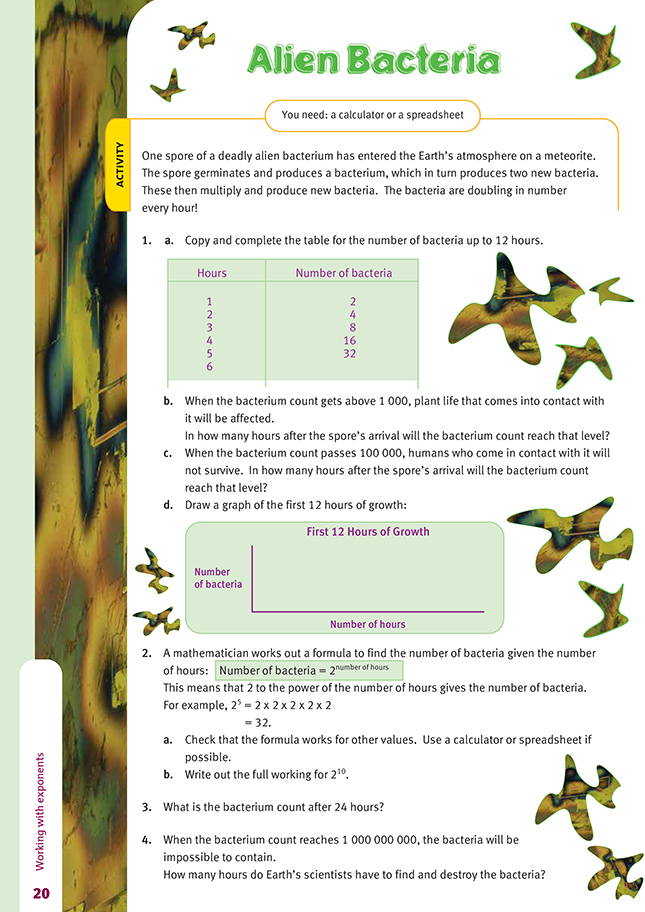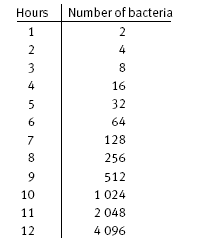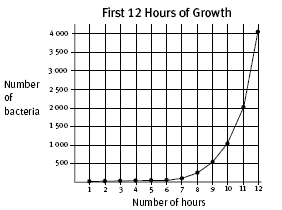This is a level 5 number activity from the Figure It Out series. It relates to Stage 8 of the Number Framework.
A PDF of the student activity is included.
Click on the image to enlarge it. Click again to close. Download PDF (207 KB)
solve problems involving exponents
FIO, Level 4+, Number, Book Six, Alien Bacteria, page 20
A calculator or spreadsheet
This activity looks at exponential growth and shows how quickly a population increases if it doubles every hour. The table in question 1 can be worked out quite easily using a calculator by keying in 2 x = = = and so on or by using the xy button on a scientific calculator. This actually replicates the table on page 4 of the student book, and so the students are likely to realise that the number of bacteria in 10 hours is 210, that is, 1 024 bacteria. If the students have only an eight-digit calculator, they could encounter difficulty with question 4, which asks them to determine how many hours scientists have to find and destroy the bacterium before it reaches a count of 1 000 000 000. The students will be able to get as far as 26 hours on their eightdigit
calculator (67 108 864). To go beyond 26 hours, they could simply round the 67 108 864 to 67 million, then double it to 134 million for 27 hours, double it again to 268 million for 28 hours, double it once more to 536 million for 29 hours, and finally double that 1 072 million for 30 hours (which is too late, as it is over the 1 000 000 000 threshold given in question 4). The students could try to do this on their calculators to see what happens. Some calculators will give the answer to 227 as 1.34217 08, that is, 1.34217 x 108, while others may display it as 1.34217E + 8. (This isn’t an exact answer. Some rounding has taken place because the calculator cannot fit all the digits in the window.) This is standard form, which the students investigated on page 5 of the student book.
The students will be able to see that scientists have just 29 hours to find and destroy the bacterium before it proves to be impossible to contain.
In question 1c, the students are asked to construct a graph of the first 12 hours of growth of the deadly alien bacterium. They may need to discuss and perhaps be helped to decide what scale they should have on the vertical axis, which denotes the number of bacterium. A discussion about the effect of the vertical scale, especially in relation to the first 6 hours, would also be useful. A scale that may be useful is one that goes up in increments of 500 and ranges up to 4 500. Such a scale would allow for the whole 12 hours of growth to be recorded as a total of 4 096 bacteria are generated in the twelfth hour.
Answers to Activity
1. a.
b. 10 hours (to the nearest hour)
c. 17 hours (to the nearest hour)
d.
2. a. The formula does work for other values.
b. The number of bacteria in 10 hours is 210, that is, 2 x 2 x 2 x 2 x 2 x 2 x 2 x 2 x 2 x 2, which is 1 024 bacteria.
3. 16 777 216 bacteria
4. 29 hours


